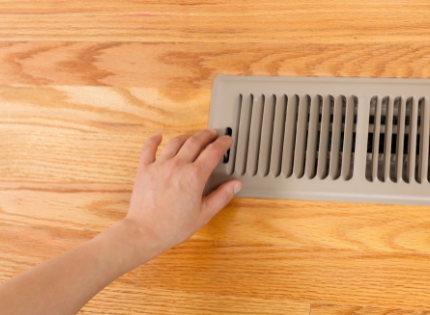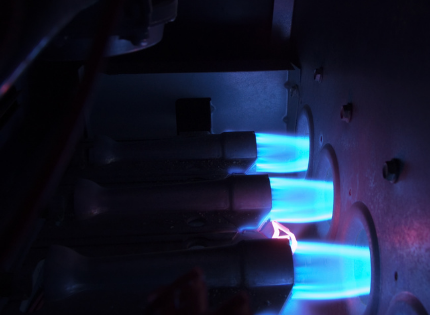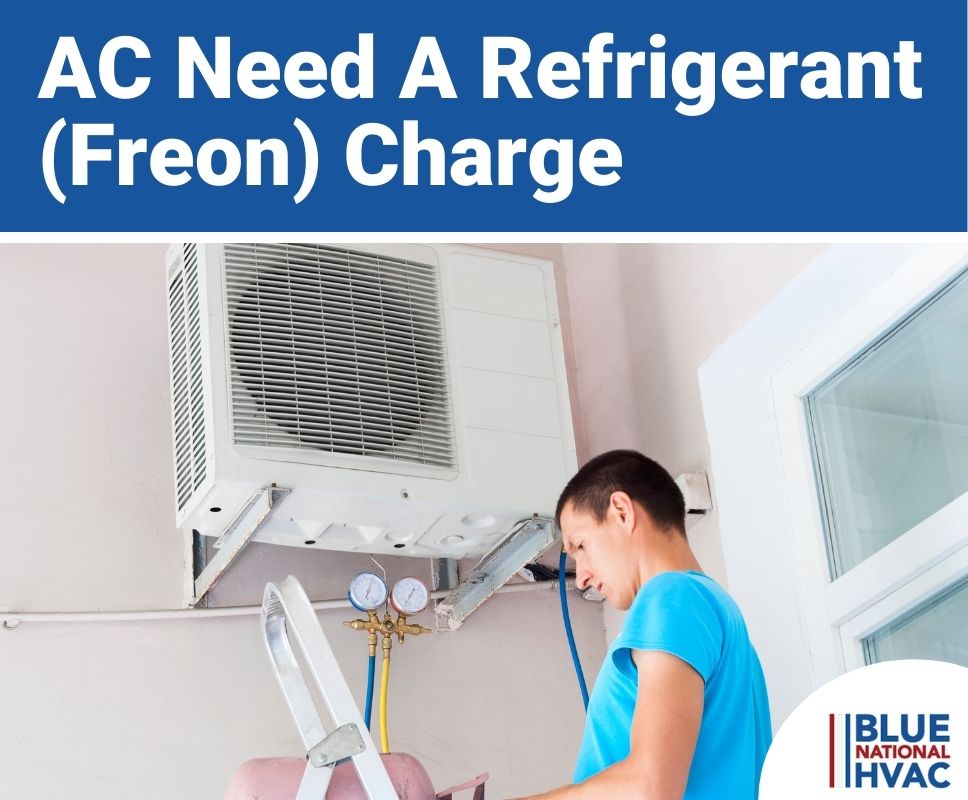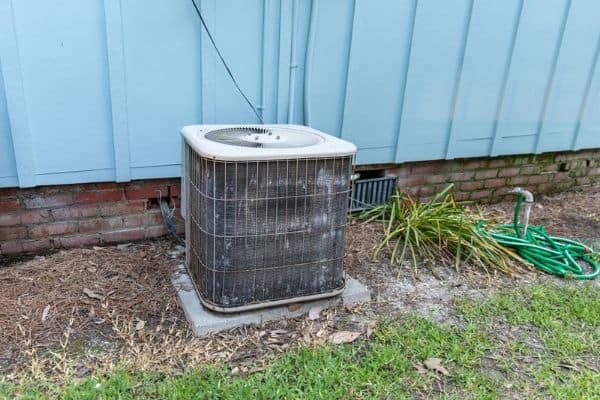Contents (Click To Jump)
Why Should You Clean And Maintain Your Gas Furnace?
Cleaning and maintaining your gas furnace is essential to keeping it efficient and optimizing its lifespan. Dirt, dust, and other contaminants can inhibit the furnace’s performance and wear down components faster.
Here are the top reasons a clean furnace is important.
Efficiency
When a furnace is dirty, its efficiency is negatively impacted, even high-efficiency units. If the efficiency lowers, it will have to run for extended periods or at higher settings to heat your home. On the other hand, it would warm your home and use much less natural gas if it were clean.
Efficiency can be impacted by:
- A reduction in airflow from clogged filters
- Dirty ductwork
- A blower weighed down with dirt
- Dirty flame sensors
- Or a buildup of contaminants on the burner and heat exchanger.
Reduce Energy Bills
When gas furnace efficiency decreases, it burns more natural gas to provide the same amount of heat as a clean unit. Therefore, cleaning and maintaining your gas furnace will ensure it burns less natural gas or propane, which in turn will reduce your energy bill.
Increase Equipment Lifespan
As you know by now, a dirty gas furnace is an inefficient one. However, inefficiency does not just increase your energy cost; it also wears down the furnace components much quicker.
As such, a furnace that is perpetually dirty and not maintained well will have a much shorter service life than a clean, well-maintained one. Additionally, it will have more frequent and more expensive repairs.
How Can You Tell When Your Gas Furnace Needs Cleaning?
You may be wondering when to clean your gas furnace. Are there specific signs indicating a gas furnace needs to be cleaned? Or should cleaning be completed at a certain time of year? The answer is a little bit of both.
Here’s how to determine when to clean your gas furnace:
Cold Weather is Approaching
A good rule of thumb to follow is to clean your furnace before you need it the most. In most parts of the U.S., furnaces should be cleaned around September or October in the Fall, before the heating season.
At the same time, routine maintenance can ensure your furnace is running efficiently when it turns on during the first cold day of the season.
It Looks Dirty
Instead of making things more complex than necessary, keep things simple. Clean components of your furnace if they look dirty. You can routinely (monthly) inspect the filter, combustion chamber, heat exchanger, blower, and other major components for a buildup of dust, dirt, and other grime.
If they’re dirty, clean them (we’ll tell you how shortly). However, be careful cleaning any interior components, and be sure to cut the power first.
Increase Energy Bill
Since dirty furnaces lose efficiency, they burn more gas to heat our home than a clean unit. Therefore, homeowners will notice a consistent uptick in their energy bills as the furnace becomes more saturated with dirt and less efficient.
To optimize your gas bill, keep your furnace running efficiently by performing routine maintenance and cleaning.
Inadequate Cooling
If the furnace is dirty, it will not be able to heat your home as well. For example, the airflow may be restricted by a clogged air filter, dirty ductwork, or blocked supply vents, which could prevent warm air from being distributed throughout your home.
Additionally, if the blower motor is saturated in dirt and dust, the weight could impact its ability to spin and move hot air. A dirty flame sensor could lead to incorrect temperature control within the burner, leading to insufficient heating.
DIY: How To Clean A Gas Furnace Step By Step
Cleaning a furnace may seem like a daunting task, especially if you’re inexperienced with the major components. Thankfully, this step-by-step guide below will walk you through the process. However, if you need assistance with cleaning your furnace, give our team of HVAC experts a call today.
Turn Off the Furnace
Before attempting to clean any component of the furnace, turn it off completely. There is usually a switch resembling a light switch directly next to your furnace, which will cut the electrical power. Alternatively, you can cut power to the furnace by flipping the breaker in your home’s circuit breaker box.
Leaving the furnace powered on can damage the furnace and result inbodily harm or death.
Clean the Combustion Chamber
The combustion chamber is the area inside your furnace where the air mixed with natural gas is ignited and creates heat. The combustion of the natural gas creates byproducts, too– water vapor, carbon monoxide, and carbon soot-which can lead to corrosion.
The soot can build up on the inside walls over a period of time. Eventually, the chamber could corrode through, and cause carbon monoxide to seep into your home.
The soot buildup can be cleaned off with a firm wire brush, and the loosened soot chunks can be sucked up with a shop vacuum. Before you reseal the combustion chamber, inspect the wall for holes. If there are any, you will need to seal them.
Change the Air Filter
The air filter is the most critical component in the cleanliness of your gas furnace. All the air that is blown into the rooms of your home passes through the furnace first. As such, it can trap a high degree of dust, pollen, germs, pet hair, and other particulates on any given day.
Changing a dirty filter is an easy task; just make sure you get the right size. For example, if your furnace is designed to fit a four-inch air filter, a two-inch one won’t work.
Depending on the MERV rating of the furnace filter, it is recommended that you change it around every six months. However, to keep things cleaner, you can inspect the filter once a month and replace it sooner if it is visibly dirty.
Note: Replacing the air filter also applies to your air conditioner.
Clean the Supply Vents
Supply vents are where the heated air from the furnace enters the rooms in your home. They are almost always located on the floor, near the walls. To clean the supply vents, remove the register covers and use a flexible hose on a shop vacuum to clean them.

Usually, supply vents do not get dirty quickly, as they are forcing air out. However, if you have a lot of pets, the vents and heating ducts could become clogged over time. Vacuuming them out every six months to a year will improve the airflow and indoor air quality. Tip: Turn the thermostat to “off” while you’re vacuuming the vents.
Clean the Blower
The blower is located inside the heating system and is one of the more complicated components to clean as it has to be removed from the furnace. If you’re not technically inclined, or you just don’t want to risk doing something wrong, forgo cleaning the blower yourself. Instead, leave the procedure up to an HVAC technician.
However, if you’re up for the challenge of cleaning the blower, ensure the power is completely off and remove the front panel of the furnace. The front panel is different from the access door and usually has a set of screws that you have to remove with a screwdriver to open.
Once you have the access panel removed, set it aside. You should be able to see the profile of the blower through the opening. It is usually secured on a set of rails (but sometimes they’re secured with screws).
You will have to remove the blower by sliding it out from the inside of the furnace towards you after you remove the wires connected to it. Make sure to mark where each wire goes with tape or take a picture of their location (assuming the wires are color-coded).
Once you have the blower entirely out of the furnace, you can clean all the dust off with a vacuum. For a deeper clean, use a damp cloth soaked with mild soap and water along with a small brush or a toothbrush for the tight spaces and the fan blades. Then, let the blower assembly dry completely before reinserting back inside the furnace, reconnecting all the wires, and reinstalling the access panel.
Clean Flame Sensor
The flame sensor sits above the burner and detects the presence of a flame. If there is no flame, the flame sensor will tell the furnace’s control board to turn off the gas valve. This is a safety feature– if there is no flame and the furnace continues pumping gas without it burning, it could lead to a fire or, worse, an explosion.
When a flame sensor gets too dirty, it incorrectly detects that no flame is present, which will turn off the gas supply even though there is a flame. Clean it by removing it from its bracket, then rub it with a soft cleaning cloth until all the grime is removed. Then, securely replace it into its bracket.
Vacuum Burner Cavity
The blower and burner cavity is the area where your furnace burner, heat exchange, and blower sit. Sometimes dust and other particulates get past the filter and cause a buildup of dirt in this area. The best way to clean it is with a trusty shop vacuum cleaner.
What Are The Furnace Maintenance Practices?
Along with keeping your furnace clean and tidy, there are other critical maintenance tasks that homeowners should know. Some routine maintenance tasks for gas furnaces are more involved than others. Schedule routine maintenance with one of our HVAC technicians if you feel out of your element with the complex procedures.
Flue Pipe Inspection
The flue pipe is essentially a metal, tubular chimney for the exhaust gases of your gas furnace. If it has any holes and leaks, it could allow exhaust gases to enter your home. In that case, carbon monoxide could build up inside your home and cause health issues, and if the exposure is too high, death.
That is why every home should have carbon monoxide (CO) monitors on every floor. The flue, along with your CO monitors, should be checked on a routine schedule. Have the flue inspected at least once a year, and hit “test” on your CO detectors monthly.
Seal Leaky Ducts
Leaky ductwork negatively affects the efficiency of your furnace. If the ductwork has many holes, the hot air your furnace worked hard to produce will be lost.
To prevent this loss in efficiency, seal any visible holes and gaps with metallic duct tape.
Adjust Dampers
If you have a combination system of a furnace and an air conditioning unit, you may have a damper with a seasonal setting. If that is the case, ensure your damper is set to the proper orientation.
Usually, there is a handle and the ductwork is marked with the proper orientation for heating and cooling.
Apply Oil
The blower motor has two shaft bearings that require lubrication to move smoothly. Oil reduces friction and maximizes the furnace’s efficiency. To lubricate the blower, remove the oil caps and apply just two to three drops of the lubricating oil into the blower motor and shaft bearings.
Inspect Blower Belt & Pilot Light
The blower belt connects the blower motor to the fan and spins it. Over time, this semi-elastic belt gets stretched and worn down. Inspect it for cracks, cervices, and fraying. If the belt looks worn or deflects more than 3/4 inches, replace it.
While you are inside the furnace, ensure the pilot light is fully lit.

When Should You Call A Professional HVAC Contractor?
Cleaning and maintaining a gas furnace is not a simple, one-and-done process. There are many complex tasks that take some initiative and know-how to complete properly. However, there are simple tasks, like replacing the furnace filter that most homeowners can easily do themselves.
If you’d rather leave furnace cleaning and maintenance up to the professionals to ensure the job is done right or need other furnace work, give us a call (and ask about our yearly maintenance programs for HVAC systems). Our team of HVAC experts can fully clean, perform a tune-up, and have your system running like a new furnace in a jiffy.









